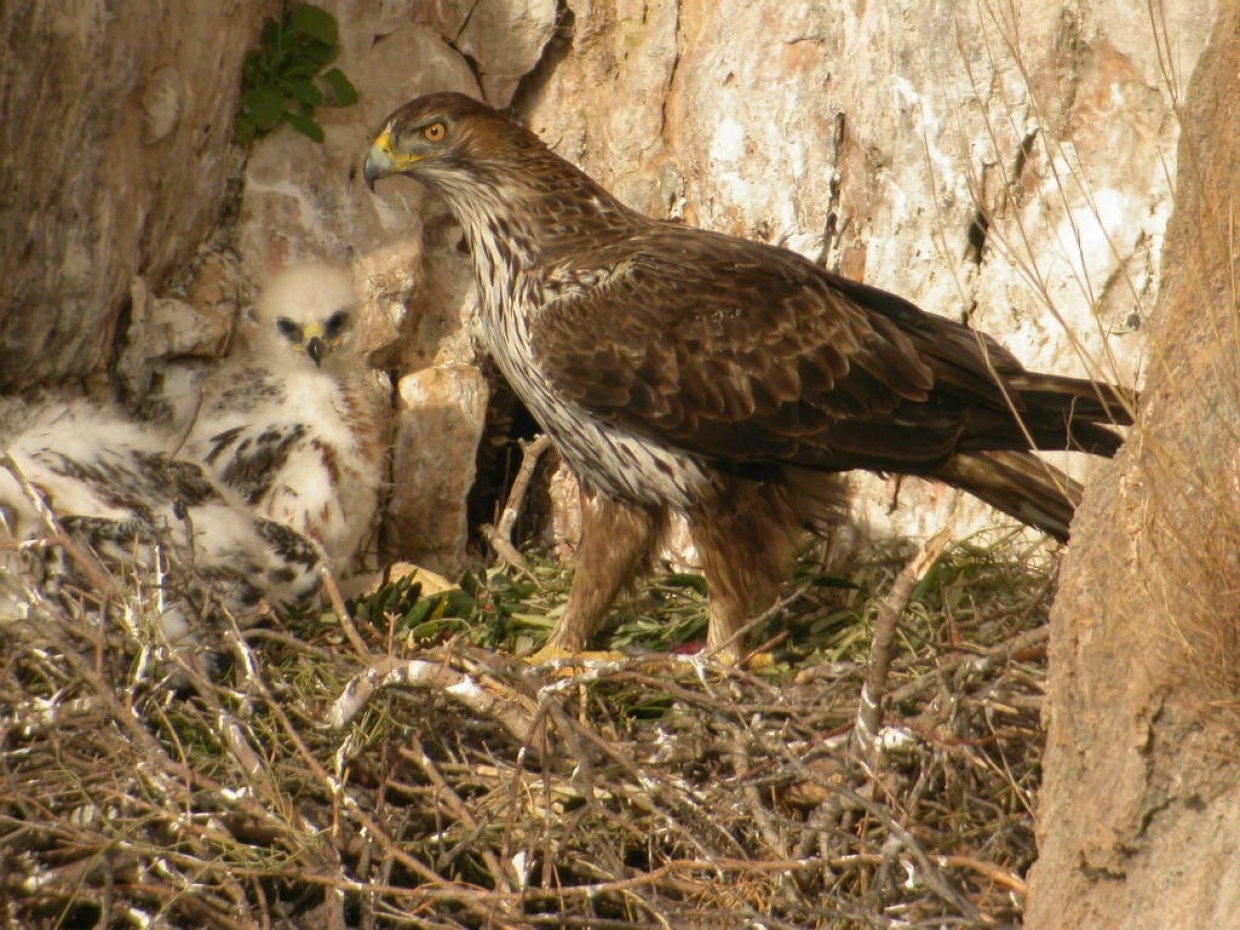The first Bonelli's Eagle hatchling of the year found in Tilos

A good omen marked the launch of Bonelli’s Eagle conservation efforts in Greece. The Aegean field team’s researchers observed the first Bonelli’s Eagle hatchling in Tilos Island, Dodecanese, one of the most prominent area for the species in Eastern Mediterranean. This observation is particularly significant for the completion of the telemetry actions, under the LIFE Bonelli EastMed Project, which started its implementation a few months ago in Greece and Cyprus.
Bonelli’s Eagle, a species widely distributed in Eurasia and North Africa, is the typical Mediterranean eagle species for Greece, since it is mostly found in the Aegean Sea islands, the coastal mountain ranges of West and Southern Greece, and Crete. It nests in vertical rocky cliffs (sometimes directly over the sea) in Greece and mainly on large trees in Cyprus. A formidable hunter, it feeds on small- and middle-sized mammals and birds.
Bonelli’s Eagles start their spectacular aerial demonstrations and the subsequent mating from January each year and they lay their eggs on early February. Immature Bonelli’s Eagles hatch from mid-March and start their flight from mid-May. They remain for a while in their native territory, dependent on their parents, and then they set off a period of nomadic dispersion, travelling over sea and islands, even reaching different countries, until they find their own territory, where they usually remain for life.
Main threats to Bonelli’s Eagle include electrocution on power transmission towers and collision with power lines, drowning in open tanks without an escape route, and disturbance in nesting areas. As any big raptor, Bonelli’s Eagle needs an extended territory, and therefore its conservation requires a large-scale spatial planning and an absence of disturbance during the breeding season. For example, the excessive number of wind power stations installed in two Special Protection Areas (SPAs) for the species, Cape Kafireas, Euboea Island, and Mani Peninsula, Peloponnese, is expected to affect the local population’s sustainability. Other negative impacts expected are habitat loss, disturbance due to construction works taking place during the species’ breeding season (against the rules set by the EU’s Birds Directive), and an increased mortality due to collisions with wind turbines and energy transmission infrastructure, if they proper mitigation measures have not been applied.
LIFE Bonelli eastMed Project aims to census and monitor the species in selected Special Protection Areas in South Aegean, Attica, Peloponnese and Crete regions in Greece, as well as in Cyprus. Its objects also include, for the first time in such a large scale, through intensive use of telemetry, monitoring of the juveniles’ dispersal movements in order to examine the Eastern Mediterranean population connectivity, mapping of their temporary settlement areas, and assessment of the threats they face using sensitivity mapping.
In order for this iconic, yet highly sensitive species to successfully coexist with man, this information is essential –especially in the insular region of the Aegean, where habitats are characterized by their small spatial scale and which are already under great pressure from extensive human activity.













